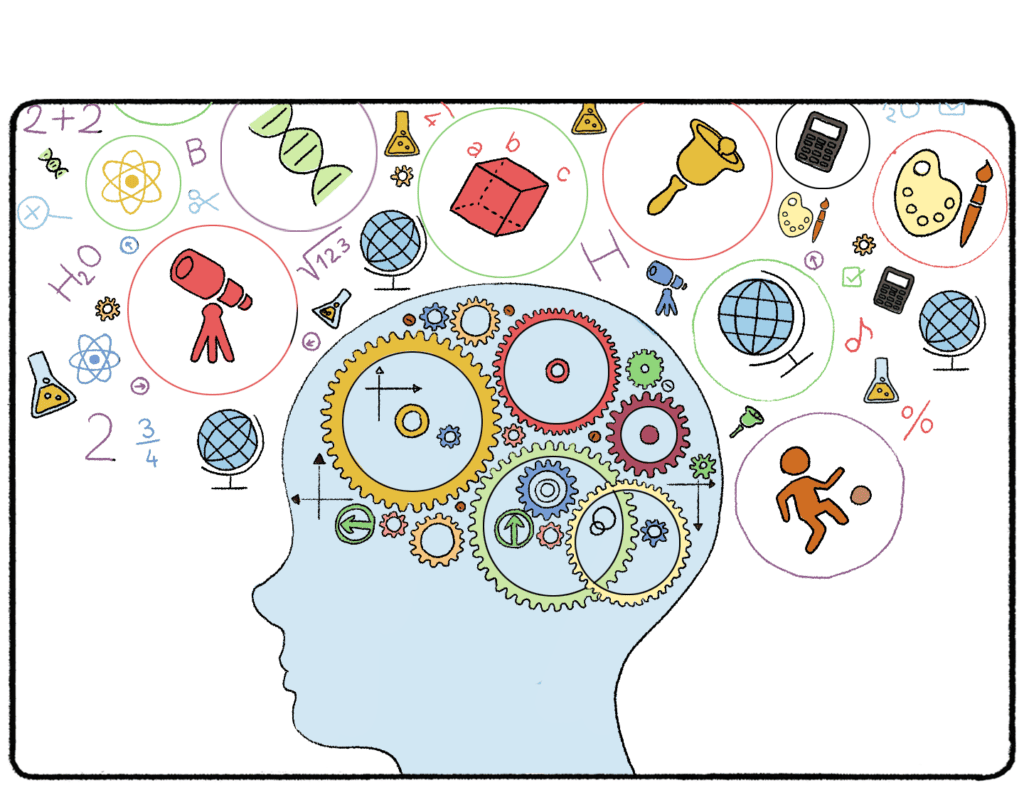If you're here, you're probably wonder what NLP, or NeuroLinguistic Programming is. Fear not, because we are going to give you everything you need to know about it, including a psychological definition and example!
We are creatures of habit. We often do things in a particular way without even thinking about it. Some of these repeated actions are important, like putting on the seat belt when we get into a car. Others, such as nail biting or smoking, are unpleasant and unhealthy. But even though we know they are bad for us, changing them is not easy. A psychological approach called neuro-linguistic programming is an effective way to create new perspectives and behavior patterns that can help us eliminate those unwanted habits.
What Is Neuro-Linguistic Programming?
Neuro-linguistic programming (NLP) is a way of changing our thoughts and behaviors to help achieve desired outcomes. Because our neurological processes, behavior, and language are interconnected, we can “reprogram” our brains to control our thoughts and actions. NLP is also a useful tool for improving communication and developing better relationships.

Who Developed Neuro-Linguistic Programming?
Neuro-linguistic programming was developed by information scientist Richard Bandler and linguist John Grinder at the University of California, Santa Cruz in the 1970s. From the very start, NLP was seen as a helpful tool in personal development and has been used extensively ever since. Neuro-linguistic programming has a wide range of applications in counseling, medicine, law, business, sports, and education.
Core Principles of Neuro-Linguistic Programming
Neuro-linguistic programming is based on four core principles:
- Sensory awareness is one of the central elements of neuro-linguistic programming. Being mindful of our own and other people’s reactions in any given situation allows us to have more flexibility and control.
- Building rapport refers to creating relationships that are built on mutual trust and understanding. Successful personal and business interactions largely depend on our ability to establish and maintain a rapport with others.
- Outcome thinking helps us direct our thoughts and avoid limiting ourselves by negative thinking. It enables us to make optimal choices and achieve the goals we set for ourselves.
- Behavioral flexibility allows us to change unproductive behaviors, create new perspectives, and build healthy habits.
How Does Neuro-Linguistic Programming Work?
In neuro-linguistic programming, our minds are perceived as internal operating systems consisting of thoughts, feelings, and beliefs. NLP determines the ways in which our states of mind affect the way we act and communicate with others and, even more importantly, ourselves. These systems can be accessed and changed or “programmed” through language.
Internal maps
Neuro-linguistic programming is based on the idea of internal maps. Internal maps are our personal representations of reality. We learn to navigate these maps through sensory experiences that determine our feelings and behaviors. They can be either auditory, visual, olfactory, gustatory, or kinesthetic. With the help of NLP, it is possible to modify any subconsciously created limitations of our individual maps.
NLP presupposes that we are biased towards one of our sensory systems, whether it is images, feelings, sounds, taste, or smell. Therefore, we tend to use our preferred representational system (PRS) to process our experiences. But if we manage to operate with all the representational systems and make use of the most suitable one in different circumstances, we will succeed in increasing our behavioral flexibility.

Modeling excellence
An important aspect of neuro-linguistic programming is modeling or recreating excellence. Modeling provides strategies for copying the accomplishments of others in order to introduce excellence into our own lives. We can model any skill or behavior by mastering the underlying beliefs and thought processes and applying them to our lives.
Logical levels of change
The model of logical levels of change is an indispensable tool in NLP. It is used to create plans for modifying undesirable thoughts or behaviors.
The model was inspired by renowned British anthropologist and linguist Gregory Bateson. According to Bateson, learning consists of natural hierarchies. These hierarchies provide a roadmap for the change process. Each of the six levels influences and directs the ones below.
Environment
Environment, the setting and people that surround us, is the lowest NLP logical level and the easiest one to modify. Simply changing something in the environment or network can eliminate triggers and modify addictive or obsessive behaviors.
Behaviors
Behaviors often contribute to negative actions and thoughts. It is crucial to be able to identify the unwanted behaviors that should be changed.
Capabilities and skills
Capabilities and skills refer to our ability to make the desired changes, as well as identifying the tools needed to make those changes. Techniques such as meditation, hypnosis, positive thinking, and relaxation can be used in overcoming fears, for instance.
Beliefs and values
Beliefs and values give us internal permission to change. Addictions, obsessions, and other undesirable behaviors can become an important value that negatively affects all the other personal values.
Identity
Identity is an evaluation of our ability to implement changes. It can be either positive or negative.
Purpose and spirituality
Purpose and spirituality pertain to the involvement in religion or ethics, where the change is seen as part of something larger than ourselves.
Does Neuro-Linguistic Programming Work for Depression?
NLP is commonly used in therapy for treating a wide range of issues from anxiety and phobias to post-traumatic stress disorders and depression. An NLP therapist will try to understand the patient’s thinking, behavior patterns, emotional states, and aspirations. By analyzing the individual’s internal maps, the therapist can help find and strengthen the most beneficial skills and develop new strategies to replace old, unproductive ones.
Neuro Linguistic Programming Approach and Techniques
NLP therapists use a number of different techniques, including:
Anchoring
Similarly to Pavlov’s conditioning, anchoring consists of turning sensory experiences into triggers for a desired emotional state or frame of mind. The anchor can be a gesture like squeezing the thumb and the index finger together or word that is associated with positive emotion. The goal is to be able to immediately access the desired emotional or mental state through the chosen anchor. After some practice, negative emotions can be replaced using these learned triggers.
Swish pattern
Just like anchoring, the swish pattern technique consists of changing response patterns to a situation that causes unwanted behaviors. It can be applied in the cases of anxieties and obsessions, for example. Patients are asked to identify the causes of their problematic behavior. They can then mentally replace the image of the usual response to that trigger by the desired one. With some practice, the new response will be generated automatically whenever the cue occurs and gradually replace the old one.
Visual-kinesthetic dissociation
Visual-kinesthetic dissociation (VKD), also known as the rewind technique, is useful in eliminating obstructive thoughts and feelings associated with a past event like traumatic memories and phobias. When an event is reimagined and relived from the safe distance of an out-of-body experience, thinking about it will no longer set off unwanted emotions.
Does Neuro-Lingusistic Programming Work?
The most significant limitation of NLP is a lack of empirical evidence. Even after several decades of its use, the effectiveness of neuro-linguistic programming and the validity of its theories have not yet been clearly demonstrated by research.
In addition, scientific research on NLP has produced mixed results. Several studies have provided firm proof that it is an effective mode of treatment for mental health issues. At the same time, there is little clinical evidence for the effectiveness of NLP in treating some health-related conditions, such as anxiety disorders, weight management, and addictions.



